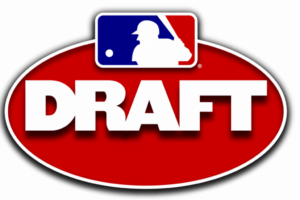My “Aha!” moment was an undrafted pitcher
In my early high school years, I went with my family to visit relatives in Albuquerque. My uncle’s company had seats for the AAA Albuquerque Dukes, at the time a Dodgers affiliate. The seats were right behind the backstop, and I was excited not only for the ball game and vantage point, but being right there among all the scouts in attendance. I had a notebook, pen and camera, and took photos and notes furiously during the game. I chatted with the scouts, who looked at me with some mix of amusement and genuine pride. This was my first foray into scouting.
Around 2007 (nearly 20 years after that Dukes game), after befriending some of the writers on the discussion forum SoxTalk.com, I joined Future Sox. Like many who have joined the writing corps here, I did not come into the role pre-loaded with extensive skills in prospect analysis. I’d spent a lifetime as a fan of baseball, statistics came easy, and I could write. What I lacked was that in-person experience of watching lots and lots of prospects. That would come with time.
People sometimes talk about their “Aha!” moment, which can happen in any field of work or study. Whether among ballplayers or writers, professional development is not linear. Sometimes, an event or tipping point in knowledge provides a solid shove forward in your abilities.
Mine was a pitcher.
Dan Remenowsky was an all-conference starter for four years at Otterbein College, a Division III program that had produced just one significant Major League player (Paul O’Neill). Despite his strong performance, Remenowsky wasn’t drafted in June of 2008 after his senior year, so he caught on with Windy City of the Frontier League. After Doug Laumann (a pro scout with the White Sox at that time) spotted him, he was signed as an UDFA in July and pitched a dozen games for the rookie affiliates that year. It was the kind of signing that happens a few times every year, and no one really took notice.
Then in 2009, Remenowsky posted big numbers in his full season debut, with Class A Kannapolis. ‘Big’ may be an understatement; it is in fact hard to find a more statistically dominant complete season from a reliever in the White Sox minors in the last decade. He posted a 1.99 ERA, 0.88 WHIP, 2.3 BB/9, 15.5 K/9, 5.7 H/9 as the Intimidators’ closer. He led all of minor league baseball in strikeout rate, in a virtual tie with Craig Kimbrel. This got my attention.
Even being new to the analyst game, I was aware there was more to evaluation than statistics. Dan was 23 years old for the 2009 season, so he was older than the average pitcher in that league by a year or two. But does that year or two fully explain his dominance? He went undrafted, so there apparently weren’t any scouts who thought he was pro material out of college. But did they maybe miss him, being at a DIII school? And what does this guy even throw? Questions met with questions, so let’s see how he does next year.
The big righty went to Class A Advanced Winston-Salem in 2010, and was dominant again (though not as dramatically so), closing out games for the Dash: 2.75 ERA, 1.19 WHIP, 3.0 BB/9, 13.7 K/9, 7.8 H/9. At this point, he’s starting to get attention from other analysts, and a few of our writers gave him “votes” for the back end of our Top 25 list. His dominant performance caused people to start asking around, including myself. The first in-person report we received talked about a pitcher with excellent command of four different breaking pitches, much more than your typical Class A reliever displays, and he had a deceptive delivery. But his fastball sat around 88-90 mph, which seemed quite low for a guy putting up these kinds of numbers. How was he doing it?
I interviewed Dan in 2010, hoping to get some answers. It was only the second player interview I’d conducted, but I could tell this was a pitcher with an unusually keen understanding of the game. He described each of his pitches in detailed quality, how and when he used them, and about his approach. Check another box – this kid was sharp. Now having interviewed countless dozens of players over the years after, Dan still stands out as one of the most baseball-smart players I’ve spoken with. Just to add fuel, on a blogger call hosted by the White Sox, Buddy Bell said he could “hit a gnat in the ass on either side of the plate.”
The mystery man opened 2011 with the Birmingham Barons, making the important leap to AA. Not only did he handle the level, his numbers were perhaps even better than in A+: 2.77 ERA, 0.90 WHIP, 2.3 BB/9, 12.2 K/9, 5.8 H/9 in 39 innings. At this point he broke into our Top 25 Prospects list, at No. 20 mid-season, and he was promoted to AAA Charlotte at age 25. It was then, for the first time in his pro career, he got hit a bit (28 H in 28 IP), and his peripherals went from superb to just OK (12 BB, 25 K). He was then demoted back to the Barons after 18 games, to finish the season. The first chinks in the armor began to show, though a 1.5-month stint isn’t going to be a career-killer.
I expected to see Remenowsky start 2012 in Charlotte, but instead he was back to AA ball again. His peripherals in AA fell back a bit but were still good, and he was only allowing batters an anemic .117 average so he was back to AAA again. There, he got hit hard again (25 H in 18 IP), and went back to AA. Another few weeks, and he went to Charlotte once more, for two games at the end of the season. It was starting to appear that the jump from AA to AAA – from a fairly prospect-rich environment to more polished hitters – was a problematic challenge.
In 2013 as a 27-year-old, he’s back in AA, and his numbers are slipping back. He’s promoted to AAA for the fourth time in his career, and struggles again. In spring training of 2014, he was released, ending his pro career. Just as his signing and partial first year, the end of his career looked like that of so many Indy ball org pickups – as if the sheer dominance between had never happened.
In the summer of 2013, as my writing here moved from occasional to substantial, it was time to start making trips to the affiliates and seeing the talent in person. I made my first “scouting trip.” On a muggy evening in Kannapolis, I sat in the scout seats taking notes and video, seated next to a senior White Sox scout. We chatted about the various prospects we were watching, and I saw an opportunity. So I asked about Dan; how does a pitcher, with excellent command of a 4-pitch mix and a deceptive delivery, so utterly dominate A, A+ and AA hitters, only to fail four times trying for AAA.
“What good does command do if none of the pitches are good? Sure, he can hit a dime with any of his pitches, but his fastball is arrow-straight and his breaking pitches just don’t do much. You can’t get Major League hitters out with four major league below average pitches,” was his response.
That was it. The piece I was missing. I understood control and command (which he had in spades), I knew he had deception, he was clearly a heady player and he’d been statistically dominant. And I’d watched plenty of baseball in my life. But he lacked the “stuff” to make it work at the highest levels.
If I was more prideful, I wouldn’t have written this article. I could pretend I’d seen the full picture all along. But if the development process for pitchers in pro ball is a bridge to the Majors, my understanding of it lacked the keystone: stuff. All those other factors are important too, make no mistake; velocity and movement alone won’t get a pitcher to the Majors either. But without the foundation, it all crumbles under the weight of increasingly talented hitters.
It is ingrained in my mind now. My approach to prospect evaluation is built around the need for seeing the full picture, but it wasn’t that way in my early years here. Perhaps I should have taken a different approach earlier on, taking queues from my own instincts at that first minor league game.
I missed the left turn at Albuquerque.
Want to know right away when we publish a new article? Type your email address in the box and click the “create subscription” button. Our list is completely spam free, and you can opt out at any time.







Wow! What a great article. I have literally begged for scouting reports on 4A players. I had questions like, why do we never hear about a hitters bat speed once he hits the majors? I was obsessed with players like Remenowski and Brady Shoemaker. All these guys needed was a chance. Why were the Sox letting them become too old for their league and losing prospect status despite good stats? A guy like me who sits behind a laptop can only see stats. The scouting reports they save for the young prospects. Once a guy hits 25 the only thing in the way of a scouting report would possibly be ‘the reliever with the 95 mph fastball but can’t hit the plate’ type. Most just disappeared into obscurity. We could see their names but couldn’t figure out why nobody even considered them as anything but minor league roster fillers. I had theories like, now that he’s 26 years old with a wife and 2 kids we can’t give him an accurate and thus negative scouting report because it would just hurt his feelings. The poor guys just never gonna make it. Or, the organization knew that these guys padded their stats against the bad players but when facing legit prospects they were over matched. But Joe Box score Watcher doesn’t know that. We can only guess and wonder.
Your article went a long way towards answering those questions for me. I think I just had an ‘Aha moment’. Thanks Matt.
Thanks Jim – I’m glad we could share the experience with you, and add to your knowledge. Great to know we occasionally can do that!